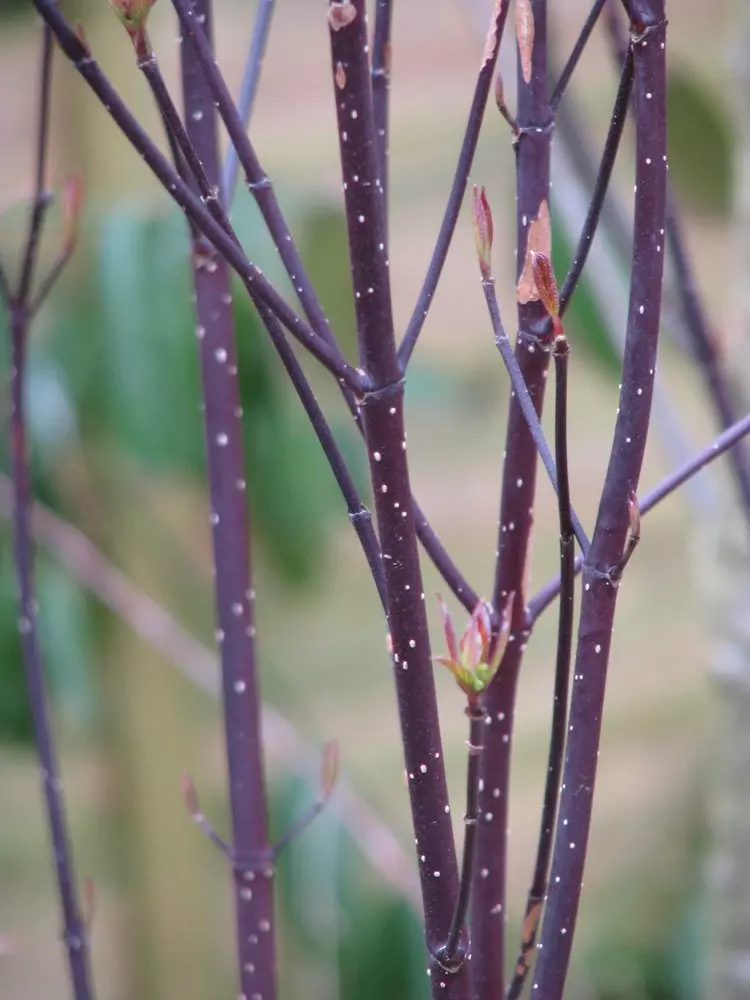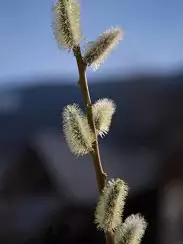Some amazing winter plants
- Joe Perkins

- Jan 9, 2019
- 4 min read

Brighten up your garden in this early part of the year. Here are some of my favourite picks which, aside from the well-known snowdrops and hellebores, can lift our spirits with their flowers or stems and remind us that Spring is not far away.
Prunus x subhirtella ‘Autumnalis’

A fantastic form of the flowering Cherry, this flowers intermittently from November till March, not in the spectacular over-the-top way of say P. ’Kanzan’, but in an elegantly understated way which, in my opinion, makes it more appreciable. It is a broadly spreading tree at maturity, up to 8m tall but rarely reaching this, it is suitable for all but the smallest of gardens. It has better autumn colour than many of the cherries and casts only light shade, but like most it does have a shallow root system so perhaps best planted in borders rather than in the lawn.
Chimonanthus praecox

One of the best shrubs for scent is Chimonanthus praecox, or Wintersweet, which has fantastical pale yellow flowers with purple staining on the inside, on bare stems. Grow against a sunny wall for the best spicy scent and in this position it can be kept to a managed size. Avoid pruning until flowering has become established – this can take around 5 years, some say up to 7 – so some patience is needed. Left to grow freely it will reach around 3m in height although it is not the most exciting shrub during the growing season so depends on how much space you have.
Edgeworthia chrysantha

Another great yellow flowering shrub for winter fragrance is Edgeworthia chrysantha, with its florets of tubular pale yellow blooms borne from winter to early spring. I came across a great specimen in Kew Gardens towards the end of last January, in full flower I could smell it well before I could see it. Like Chimonanthus, this plant also needs a sheltered position, withstanding only -5 Celsius where C. praecox will take -10. It also needs good soil preparation and sun or dappled shade to do well, being a woodland edge dweller. It’s possibly all the more rewarding for being tricky to grow.
Sarcococca hookeriana var. humilis

By far one of my favourite plants for the front garden is Sarcococca – the smaller, neater forms (S. hookeriana var. dignya and S. humilis) – although if you have more space and want something that will grow to a metre or more then S. confusa and its smaller cousin S. ruscifolia var chinensis are also wonderful. All have shiny evergreen leaves and deliciously scented white or pinkish white flowers through the winter (hence the common name Christmas Box). These plants look good all year and are easy to grow and care for, which is why I think they are amongst the best choice for a front garden, where you want something that meets these requirements, plus it cheers you up every morning in the gloomiest of January weather.

Iris unguicularis
The so-called Algerian Iris (although it’s native range includes Greece and its islands), can be found flowering from early January through till late March. It’s lavender blue flowers have a sweet scent and are a welcome sight although the foliage is often a bit scruffy and unprepossessing It’s hard to begrudge a plant which has such a summery look and which tolerates, actually likes, poor dry soil.
No list of winter plants would be complete without mentioning the value of winter stems, for which the dogwoods, Cornus alba ‘Sibirica’, C. sericea ‘Flavirimea’ and C. sanguinea ‘Midwinter Fire’, are rightly famous. I actually love the C. alba variety ‘Kesselringii’ which has dark red, almost black stems, and which looks amazing planted with masses of grasses, evergreen or deciduous if their leaves persist well through the winter. I also find the violet willows, Salix daphnoides group, very useful if kept coppiced on a 2 year cycle. S. daphnoides ‘Aglaia’ has dark reddish purple stems with silvery catkins from late January to March. It is particularly effective as a backdrop around ponds and other water bodies, and is best en masse and so does need space.

Finally, for climbers, you could do a lot worse than to have Clematis cirrhosa var Balearica in your garden. This is a neat, ferny-foliaged clematis with evergreen leaves much prettier and more delicate than the rampant C. armandii, and with simple bell-shaped white, cream or red speckled fragrant flowers. The plant itself is well-behaved, and suited to covering a low wall as much as growing up a pergola. In very cold weather the leaves turn a greeny-bronze which I think is an added attraction.
Next post may concentrate on winter bark and stems which can provide so much colour and texture. Meanwhile, if you’ve enjoyed reading this then please feel free to share and/or like! Thank you 🙂





Comments